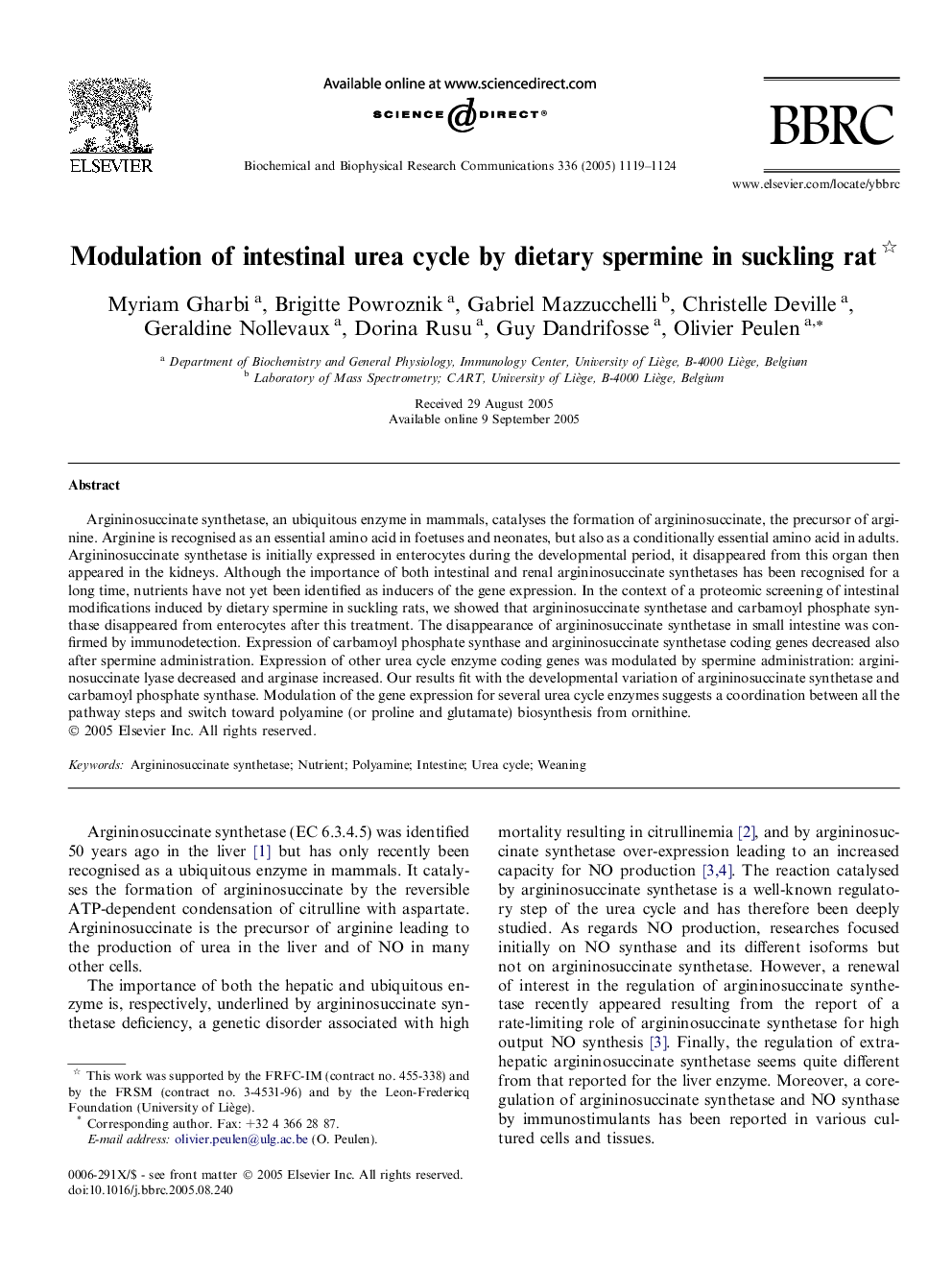| Article ID | Journal | Published Year | Pages | File Type |
|---|---|---|---|---|
| 10767760 | Biochemical and Biophysical Research Communications | 2005 | 6 Pages |
Abstract
Argininosuccinate synthetase, an ubiquitous enzyme in mammals, catalyses the formation of argininosuccinate, the precursor of arginine. Arginine is recognised as an essential amino acid in foetuses and neonates, but also as a conditionally essential amino acid in adults. Argininosuccinate synthetase is initially expressed in enterocytes during the developmental period, it disappeared from this organ then appeared in the kidneys. Although the importance of both intestinal and renal argininosuccinate synthetases has been recognised for a long time, nutrients have not yet been identified as inducers of the gene expression. In the context of a proteomic screening of intestinal modifications induced by dietary spermine in suckling rats, we showed that argininosuccinate synthetase and carbamoyl phosphate synthase disappeared from enterocytes after this treatment. The disappearance of argininosuccinate synthetase in small intestine was confirmed by immunodetection. Expression of carbamoyl phosphate synthase and argininosuccinate synthetase coding genes decreased also after spermine administration. Expression of other urea cycle enzyme coding genes was modulated by spermine administration: argininosuccinate lyase decreased and arginase increased. Our results fit with the developmental variation of argininosuccinate synthetase and carbamoyl phosphate synthase. Modulation of the gene expression for several urea cycle enzymes suggests a coordination between all the pathway steps and switch toward polyamine (or proline and glutamate) biosynthesis from ornithine.
Related Topics
Life Sciences
Biochemistry, Genetics and Molecular Biology
Biochemistry
Authors
Myriam Gharbi, Brigitte Powroznik, Gabriel Mazzucchelli, Christelle Deville, Geraldine Nollevaux, Dorina Rusu, Guy Dandrifosse, Olivier Peulen,
